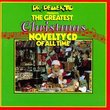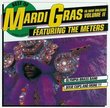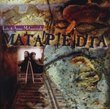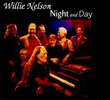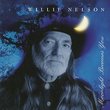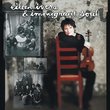| All Artists: Nicholas Merryweather, Karl Jenkins, Rachel Lloyd, London Philharmonic Orchestra, Elizabeth Watts, Susie Parkes Title: Karl Jenkins: The Armed Man, A Mass for Peace Members Wishing: 0 Total Copies: 0 Label: EMI Classics Release Date: 5/10/2005 Genres: New Age, Classical Styles: Meditation, Opera & Classical Vocal, Historical Periods, Modern, 20th, & 21st Century Number of Discs: 1 SwapaCD Credits: 1 UPCs: 724381101520, 2605000015931 |
Search - Nicholas Merryweather, Karl Jenkins, Rachel Lloyd :: Karl Jenkins: The Armed Man, A Mass for Peace
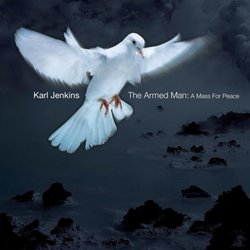 | Nicholas Merryweather, Karl Jenkins, Rachel Lloyd Karl Jenkins: The Armed Man, A Mass for Peace Genres: New Age, Classical
Karl Jenkins's The Armed Man: A Mass for Peace is a departure from his Adiemus recordings into the more conventional territory of large-scale choral and orchestral writing, though his customary passion for ... more » |
Larger Image |
CD DetailsSynopsis
Amazon.com Karl Jenkins's The Armed Man: A Mass for Peace is a departure from his Adiemus recordings into the more conventional territory of large-scale choral and orchestral writing, though his customary passion for mixing languages remains in full force with texts in English, Latin, and French. Jenkins has said that The Armed Man was inspired by the "L'Homme armé" masses that were popular in the 16th century, and he makes this debt clear with passages written in a neat pastiche of Palestrina-style renaissance polyphony. There are also echoes of earlier and later styles, including plainchant, medieval ballads, John Barry-style horn writing (think Goldfinger), and even a direct quote from Rigoletto (the choir imitates wind sounds at one point as in Act 3 of the Verdi opera). The smorgasbord manages to hold together, probably because Jenkins's obvious sincerity shines through every note. The London Philharmonic Orchestra plays beautifully, and treble Tristan Hambleton performs his solo with ethereal clarity. The National Youth Choir sings with vigor and accuracy, even if the young sopranos sound a little thin at the top of their range. If you liked the soundtrack to The Mission, this should press all the right buttons. --Warwick Thompson Similarly Requested CDs
|
CD ReviewsPowerful and accessible MPW | Rye, NY United States | 11/02/2004 (5 out of 5 stars) "Karl Jenkins music is fresh without it being weird, familiar without it being cliched. His approach to harmonic progression is structured and logical, yet still is wonderfully original. Of the CDs I have of his, this is the most traditional in style. It is inspiring and intriguing, but on first listen, parts of it come off as a little ordinary. On second or third listen, however, the originality and craftsmanship comes through. I taught my choir the Sanctus; it was easy to learn, and after we sang it on a Sunday as a prelude, we received several favorable comments from the congregation. (The most puzzling was "I loved the Gregorian Chant you sang.."!! The only thing the Sanctus shares with Gregorian chant is the Latin..) Still, the choir loves it, the congregation loves it, and my middle-school and high-school daughters love listening to the up-tempo numbers in the car." Simply wonderful and moving W. Jamison | Eagle River, Ak United States | 01/11/2007 (5 out of 5 stars) " What a wonderful way to remember the last century! What a way to meditate on the prospect of peace or war in this one. This selects from the styles and melodies most primal and meaningful. At least it seems so while listening to them. I first became familiar with Karl Jenkins Mass when it was selected for Sacred Concert on Sunday morning and was so taken with it I almost stayed in the car to hear the end rather than go into church from the parking lot! I searched for it at our local libraries that afternoon and not finding it there took the plunge to order it from Amazon to add to my already overstuff Amazon furnished house. With the way this century is going so far this mass has good reason to be played over and over again. " Accessible Classical Music Samuel Hunter | Fairview, NC | 07/04/2006 (3 out of 5 stars) "As written in other reviews, this piece is very accessible, perhaps not easy to listen to because of the subject matter, but accessible to all. The first time I listened to it, I was overwhelmed. However, as a fan of earlier 20th century and late 19th century romantic works, I have not found this disc as captivating past one listening as some of these other works, for example, the Dona Nobis Pacem by Ralph Vaughan-Williams, as mentioned in another review. The length of the piece relies on repetition, ad nauseum, which is used to great effect in some places (movement 7 comes to mind), but is used constantly throughout the piece without much harmonic, melodic, or textual variation.
All in all, I think it is a very beautiful and noble piece, with a very noble goal (which we should all strive toward in the 21st century), but will not have the shelf life in my listening as most of my favorites." |

 Track Listings (13) - Disc #1
Track Listings (13) - Disc #1